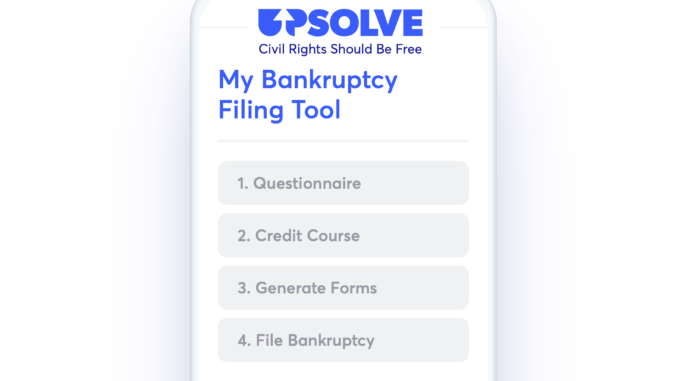
Meet Upsolve, a non-profit legal tech company that helps people file for bankruptcy in the US without the need for a lawyer. Using a carefully designed web-based system, people are guided through the form filling and other steps needed to complete a bankruptcy filing. This helps solve one of the painful ironies of being bankrupt, in that it’s a time when people really need professional help, but also when they have little or no money to spend. So, this can really help.
Upsolve is the largest bankruptcy non-profit in the US, having relieved over $250 million in debt since launching 2.5 years ago. With the current Covid-Recession, more individuals may seek bankruptcy protection, although Upsolve only operates in the US.
Upsolve was co-founded by Rohan Pavuluri, who is also the CEO. He got the idea for Upsolve as an undergraduate at Harvard while working on self-help information packets for people deciding whether to file for bankruptcy.
Although aimed primarily at low-income families, the basic idea is one that is highly extendable and we’ve seen similar approaches with platforms such as consumer rights site DoNotPay.
See AL TV Product Walk Through (approx 12 mins.)
What they are doing is taking a legally recognised process, reverse engineering it to understand all the steps involved and then seeing if you can then build a digital pathway that can guide a person through that legal route without the need for additional external input.
Naturally, there are limitations. If you find you need complex advice then such platforms can only take you so far. In fact, Upsolve has a filter Q&A feature to make sure the people trying to use it will get the most out of the platform, i.e. they are low income and don’t have complex asset profiles.
But the key point here is that if the core of a legal process is completing a form in the right way, getting past all the jargon and unfamiliar terms, and sending it to the right place in the legally accepted way….then these DIY systems can do a lot to help, not just for access to justice but legal services in general.
As Pavuluri explained: ‘It’s a lot like TurboTax, or document assembly tools you may have already seen.’
Fundamentally what it does is help to populate the official forms needed and guides you through uploading documents such as tax returns. All of which may sound simple enough to a lawyer or accountant, but to many people would be a baffling and stressful exercise on their own. And as mentioned, they may very well be stuck on their own as they cannot afford to hire a lawyer to help.
In the AL TV product walk through (above) Pavuluri shows how the system works and also explains some of the other aspects such as making a big effort to gain and share reviews of the product to help people to see what everyone else thinks. This also builds trust in the product.
So few legal tech companies make wide-scale client feedback visible on their sites. It’s such a good idea.
We see the same approach in no-code DIY toolkits, expert systems, and with self-serve contract creation inside corporates, as well as consumer rights-focused and other A2J applications. They all share the same central idea: that ‘legal’ work – where it can be turned into a logical and digitised process without the need for additional advice – can be made into a far more simple experience and achieve reliable results for the user.